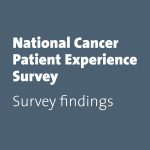Dame Tessa Jowell led a call to action for lasting change for all brain tumour patients. She asked for all patients to benefit from “the latest and greatest science” and called to focus on “living well with cancer, not just dying from it”.

The Tessa Jowell Brain Cancer Mission Leadership team. Left to right, Professor Richard Gilbertson (Li Ka Shing Chair and Head of Oncology, University of Cambridge and Director of the CRUK Cambridge Centre). Tessa’s daughter Jess Mills serves as the TJBCM’s co-founder and special advisor. She ensures that the TJBCM’s objectives meet her mother’s vision. Dr Nicky Huskens is the Director of the TJBCM. She oversees each of the Strategic Programmes and is responsible for running the mission day to day. Lord O’Shaughnessy (not pictured) is a Patron and strategic advisor of the TJBCM.
Inspired by the successes in the field of muscular dystrophy, where muscle wasting services collectively raised treatment and care standards through centres of excellence, the Tessa Jowell Brain Cancer Mission (TJBCM) launched its ‘Tessa Jowell Centre of Excellence’ strategic programme in November 2019. And from today, hospitals can apply to become a Tessa Jowell Centre of Excellence.The Centres will provide an academic and clinical ‘home’ for the Mission’s Strategic Programmes embedded in the heart of the NHS and aligned Academic Health Science Centres and ensure patients receive the latest and greatest evidence-based care.
The Tessa Jowell Brain Cancer Mission is a convening body, chaired by Professor Richard Gilbertson and supported by brainstrust, ACT for Cancer, Brain Tumour Research, Brain Tumour Support, Cancer Research UK, the Eliminate Cancer Initiative, the NCRI (National Cancer Research Institute), the NIHR (the National Institute for Health Research), NHS England, the Brain Tumour Charity and the University of Cambridge.
Will Jones CEO of brainstrust sits on the Joint Strategy board for the mission and the people brainstrust is here to help are represented by brainstrust across the Mission’s Strategic Programmes. These programmes are looking at driving progress for people with a brain tumour in brain tumour treatment and trials; improving specialised training for doctors; creating new roads in research; embracing new technology and data. The Tessa Jowell Centres, as they come online, are a critical step towards giving these programmes a home.
Applying to be a Centre of Excellence
All UK neuro-centres will receive an invitation to apply for assessment on the 26th of October and will be given eight weeks to complete the application ahead of the submission deadline on the 19th of December. The applications will be shared with the review committee early January and the committee will convene the first week of February to decide on which centres will be likely to receive designation. The first round of Tessa Jowell Centres of Excellence will be announced in the week commencing March 1st.
A formal invitation to apply will be extended to all UK neuro-oncology centres on the 26th of October 2020. Centres that wish to apply and who have not received an invitation should contact Dr. Nicky Huskens as soon as possible to obtain the information pack (nicky.huskens@tessajowellbcm.org).
You can read more about the programme, here on the Tessa Jowell Brain Cancer Mission website





